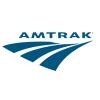In November 2021, the Infrastructure Investment and Jobs Act (IIJA)1 provided $66 billion for passenger and freight rail improvements, the largest investment in rail in generations. Amtrak’s (the company) agreement workforce2—particularly its Electric Traction, Communication and Signals, and Track workers—will play a leading role in carrying out the company’s infrastructure rehabilitation and revitalization plans made possible in large part by IIJA. The company reported that it filled more than 4,600 agreement positions in fiscal year (FY) 2023 and expects to fill about 3,300 more by the end of FY 2024. Company officials acknowledge, however, that filling these jobs has been and continues to be challenging in a tight labor market in which multiple industries are vying for workers with the same skills and experience as the company—in many cases to support projects funded by IIJA in other transportation sectors.Our objective was to assess the extent to which the company is prepared to hire, onboard, and retain a sufficient agreement workforce to execute its growth plans. During our early work, managers in operating divisions voiced concerns that delays in the hiring process may be causing the company to lose viable candidates for its agreement ranks and could prevent it from efficiently bringing in new talent. We also noted potential issues with the company’s ability to track candidates through the preboarding process. Therefore, we revised our audit scope and methodology to identify any challenges in the Human Resources department that were contributing to these delays and tracking issues.
Report File
Date Issued
Submitting OIG
Amtrak (National Railroad Passenger Corporation) OIG
Other Participating OIGs
Amtrak (National Railroad Passenger Corporation) OIG
Agencies Reviewed/Investigated
Amtrak (National Railroad Passenger Corporation)
Report Number
OIG-A-2024-002
Report Description
Report Type
Audit
Agency Wide
Yes
Questioned Costs
$0
Funds for Better Use
$0
Report updated under NDAA 5274
No
Additional Details


